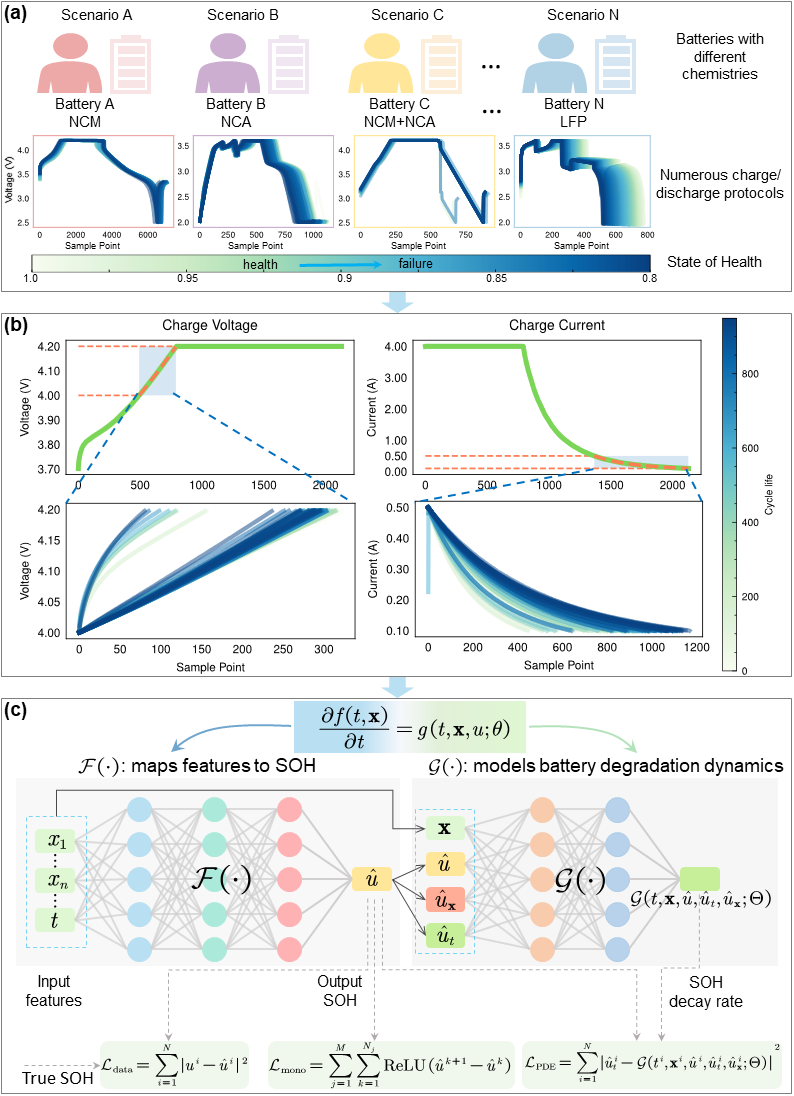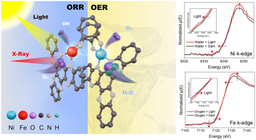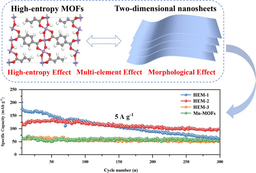Physics-informed neural network for lithium-ion battery degradation stable modeling and prognosis
Published in Mechanical Engineering

Related to research
Lithium-ion batteries find applications across various domains of life, garnering increasing attention towards their health status. Presently, a plethora of machine learning-based methods for estimating battery State of Health (SOH) have emerged. However, these methods wholly forsake physical insights, leading to results that are non-interpretable and volatile. Physics-informed machine learning (PIML) represents a novel paradigm for addressing scientific queries employing machine learning techniques, effectively amalgamating physical insights with machine learning models, thereby promising enhanced estimation outcomes. Consequently, our study proposes the utilization of physics-informed neural network (PINN) for estimating battery SOH.
The schematic depiction of our study's framework is illustrated in Figure 1, while detailed technical nuances can be perused in our paper.

The motivations and ideas behind the research
Throughout our investigation, we observed a profusion of published articles concerning SOH estimation. Nevertheless, the features devised in these articles predominantly cater to specific datasets, rendering them inapplicable when applied to different datasets. Hence, our aim was to devise a more universally applicable feature set. Consequently, we analyzed copious battery degradation data, culminating in the formulation of our own feature design methodology.
On another front, machine learning-based SOH estimation methods grounded in neural networks exhibit considerable prediction error volatility, with model accuracy heavily contingent upon data quality. Hence, we pondered: Could the integration of certain physical insights mitigate these issues to a certain extent? Consequently, we proposed leveraging Physics-Informed Neural Network (PINN) for SOH estimation. Subsequent to extensive analysis and validation, we ascertained the validity of our approach.
In summation, we proffered the PINN for battery SOH estimation, substantiating its superiority through experimentation. Furthermore, we validated its advancements in small-sample learning and transfer learning across batteries with differing chemical compositions and charge/discharge profiles. Physically-informed neural networks hold promise as an efficacious avenue for employing artificial intelligence in addressing real-world engineering quandaries. By harmonizing traditional physical models with neural network models, it becomes feasible to more accurately capture the intricate dynamical behavior of battery systems, thereby fostering more reliable and precise state estimation. However, this nascent domain still necessitates further scholarly exploration. The PINN framework proposed herein serves as an initial exploration of such methodologies, stimulating further research endeavors in this domain.
Authors:
Fujin Wang1,2, Zhi Zhai1,2, Zhibin Zhao1,2, Yi Di1,2, Xuefeng Chen1,2
1 National and Local Joint Engineering Research Center of Equipment Operation Safety and Intelligent Monitoring, Xi’an Jiaotong University, Xi’an, 710049, Shaanxi, PR China.
2 School of Mechanical Engineering, Xi’an Jiaotong University, Xi’an, 710049, Shaanxi, PR China.
Follow the Topic
-
Nature Communications

An open access, multidisciplinary journal dedicated to publishing high-quality research in all areas of the biological, health, physical, chemical and Earth sciences.
Related Collections
With Collections, you can get published faster and increase your visibility.
Women's Health
Publishing Model: Hybrid
Deadline: Ongoing
Advances in neurodegenerative diseases
Publishing Model: Hybrid
Deadline: Mar 24, 2026






Please sign in or register for FREE
If you are a registered user on Research Communities by Springer Nature, please sign in